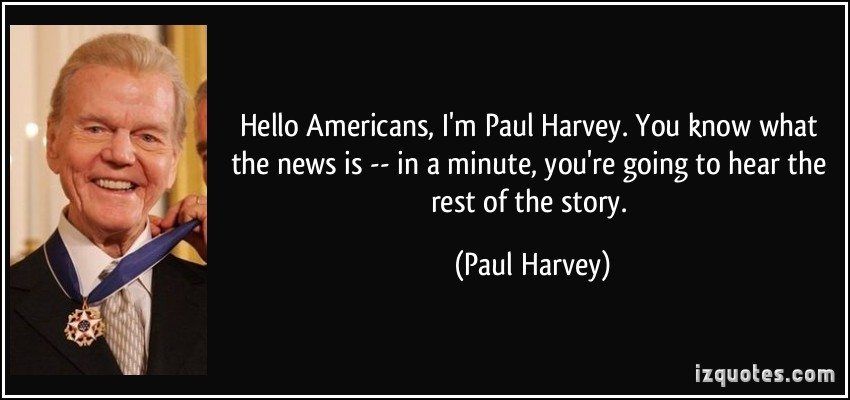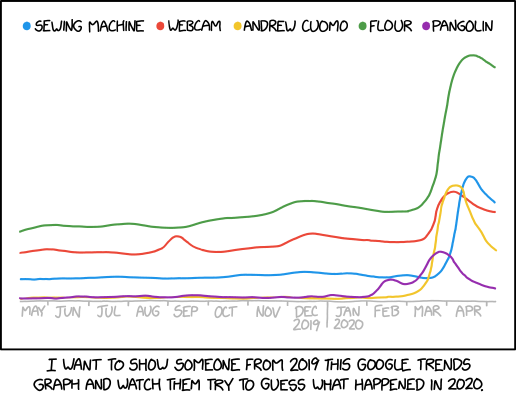
When I was a kid one of my favorite people to listen to on the radio was Paul Harvey. He did a news program at noon every day. He would tell a story that always had a surprising twist and end with his signature line: “And now you know the rest of the story.” Paul Harvey was not rewriting any of the news, but sharing interesting tidbits that gave a broader picture.
Antiracism has been accused of being revisionist, implying that modern historians are trying to rewrite history and distort it with their prejudices and viewpoints. What this accusation ignores is that all historians, including the ones who were contemporary to the actual events as they transpired, are biased according to their culture and viewpoints. Furthermore much of Western history, and American history in particular, has intentionally been told from the viewpoint of validating the powerful, white male perspective.
History textbooks themselves are horrible. They are biased and one-sided. Some new histories react against the myths of Manifest Destiny and American Exceptionalism by going to the extreme the other way. What is needed is an honest telling of the history and actions of individuals.
The entirety of history is too vast for any one person to study. Therefore historians decide whose stories are important enough to tell and what to include. For example, George Washington and Thomas Jefferson were Founding Fathers involved in some of the most critical moments of the creation of this country. They were also owners of enslaved people and benefited from their labor (Mount Vernon does a great job sharing the stories of the enslaved residents). But students are more likely to hear fables about chopping down cherry trees than the fact that Washington rotated his enslaved people in and out of Philadelphia every six months to skirt a law granting them freedom or the great lengths he spent pursuing Ona Judge, an enslaved young woman who was his wife’s personal attendant, who escaped to freedom in the north.
Teachers should present all sides of historical figures and let students decide for themselves how to judge their legacies. The fact that Washington and Jefferson were enslavers doesn’t negate other positive things that they accomplished. But is Thomas Jefferson more important than Sally Hemings? Does her story deserve to be told too?
What modern historians have done is more attune to Paul Harvey “telling the rest of the story.” They are not rewriting history, but uncovering forgotten or neglected aspects of history. Chief amongst the forgotten parts of history are the stories of women and BIPOC.
Instead of creating heroes or villains, let’s share historical actors as flawed humans and let students make their own judgments based on the totality of their actions.
The teacher’s role is to share the entire story, not to edit out the embarrassing parts. We don’t justify or excuse evil. We don’t ignore positive contributions. We present the whole truth and let students decide.
What historians are always attempting to do is get a more complex, well-rounded version of what happened in the past. They, themselves, are biased based on a myriad of factors. Bias does not make something incorrect. I can be biased and right or biased and wrong. Accuracy and bias are two different, but related animals.
But we aren’t neutral. Neutrality is a myth. As Howard Zinn said, “You can’t be neutral on a moving train.” Neutrality is usually claimed by the traditional teacher teaching from the sterilized textbook version of history. While this approach may be “safe” because they are using state and board approved materials, it is anything but neutral. Textbooks are incredibly biased and most include many myths.
Teachers themselves are biased by:
- the resources they choose and don’t choose
- the curriculum they follow or don’t
- the stories they tell or don’t
- the things they test or don’t
- the people they ignore or don’t
Most teachers attempt to hide their personal opinions from the class, but their bias will still shine through to the observant student. Rather than denying or ignoring our biases, it would be more honest to tell students up front why we choose certain resources. Mixing up different primary sources is a great method to challenge students to decide for themselves.
So when you employ Antiracist projects in your classroom, you are not rewriting or changing history, but shining a light on neglected stories to give students a more complete version of the story of all humanity.
“Ignoring the history that you don’t like is not a victimless act.” John Oliver
Let’s Connect
Questions? Interested in SEL and PBL workshops or consulting on remote learning? Connect with me at michaelkaechele.com or @mikekaechele.

